|
The
Louvre Museum III
Article written by Rick Archer,
May 2007
|
|
|
|
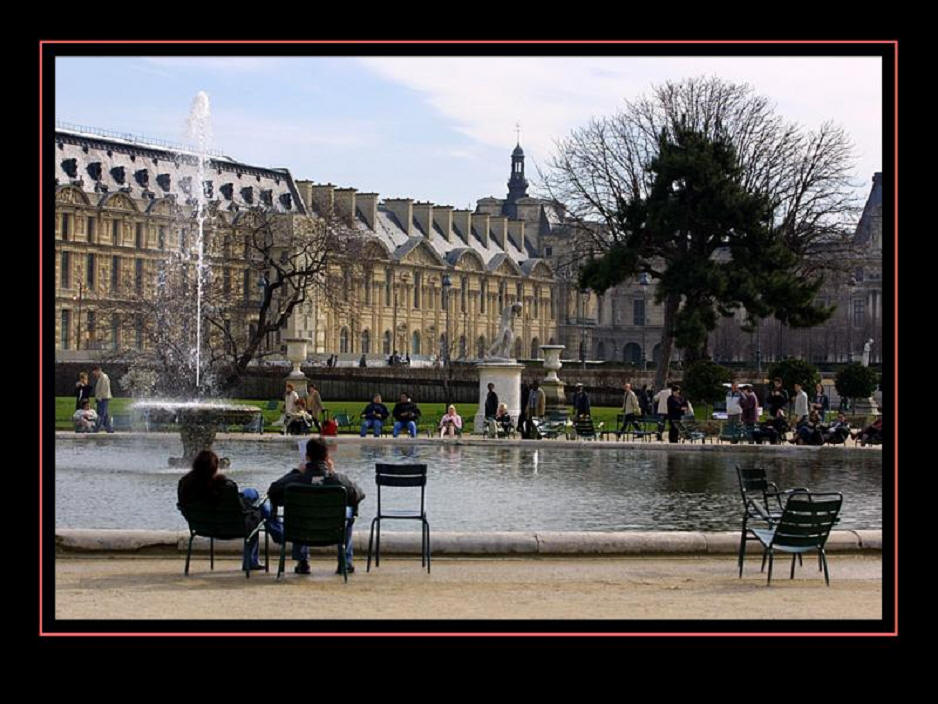 |
|
|
|
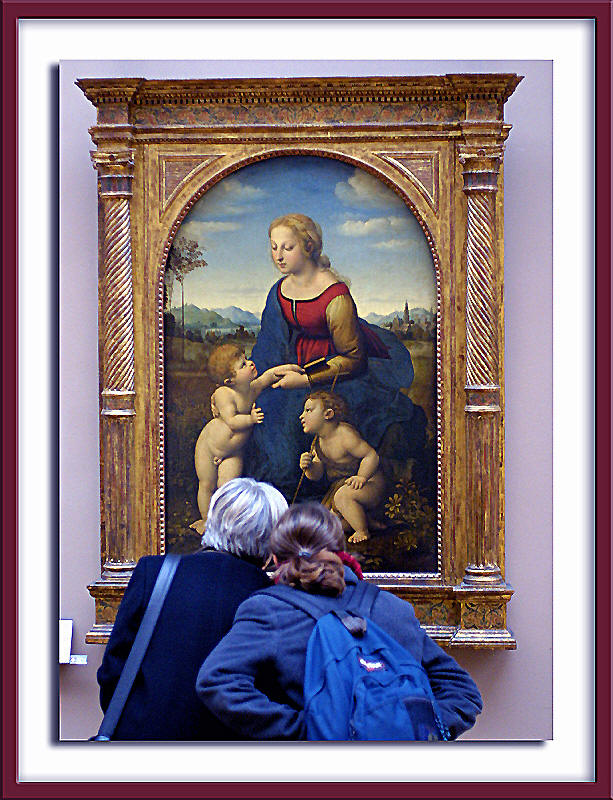 |
010.
Madonna with child
with the infant
Saint John the Baptist by
Raffaello Santi (La Belle
JardiniŤre) 1507 (Title contributed by Jan Davis)
Title confirmed at
Louvre Museum web site
|
|
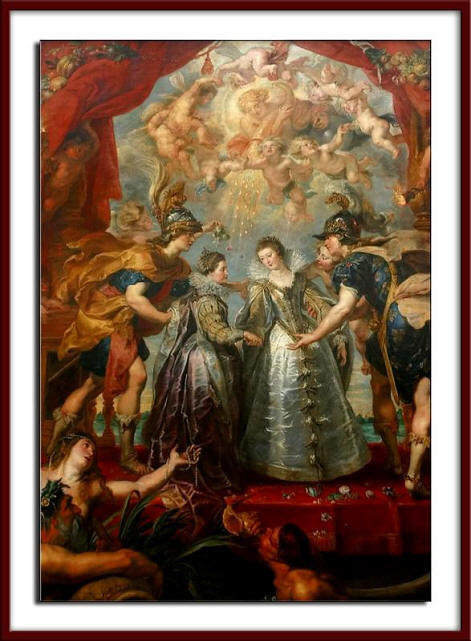 |
011. The
Exchange of Princesses
1622-1625 Peter Paul Rubens
Note: this title can be confirmed on
the
Louvre Museum web site.
|
|
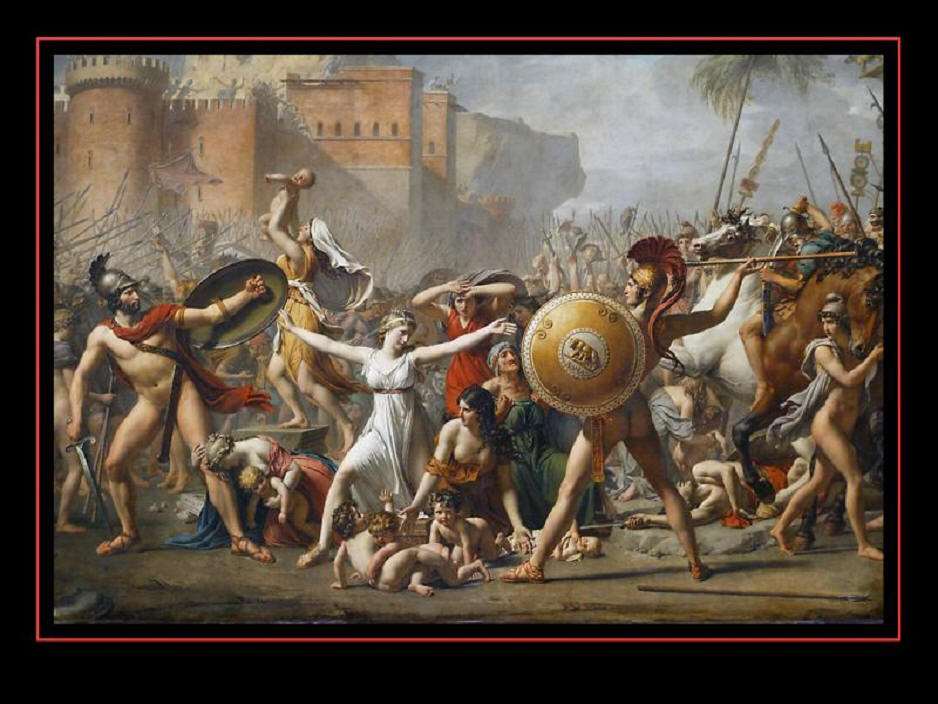 |
012. The Sabine Women, Jacques-Louis
David, 1799
The painter
David was in jail, dependent upon assistance from his pupils
and his ex-wife, herself recently in danger because of her
openly royalist sentiments. In this sort of limbo, David
returned to his original ideas of antiquity and purity,
which had somehow gotten mixed up with violence and
bloodshed. Once released from prison, because of the
intervention of his wife and pupils, he embarked on an
ambitious project. "I set out to do something entirely new.
... I want to take art back to the principles laid down by
the Greeks." This daunting project took him four years and
produced this picture.
We are in the early days of Roman history. The Romans have
abducted the daughters of their neighbors, the Sabines. To
avenge this abduction, the Sabines attacked Rome, although
not immediately--since Hersilia, the daughter of Tatius, the
leader of the Sabines, had been married to Romulus, the
Roman leader, and then had two children by him in the
interim. Here we see Hersilia between her father and husband
as she adjures the warriors on both sides not to take wives
away from their husbands or mothers away from their
children. The other Sabine Women join in her exhortations.
Sabine Women Stopping Battle btw. Romans and Sabines
|
|
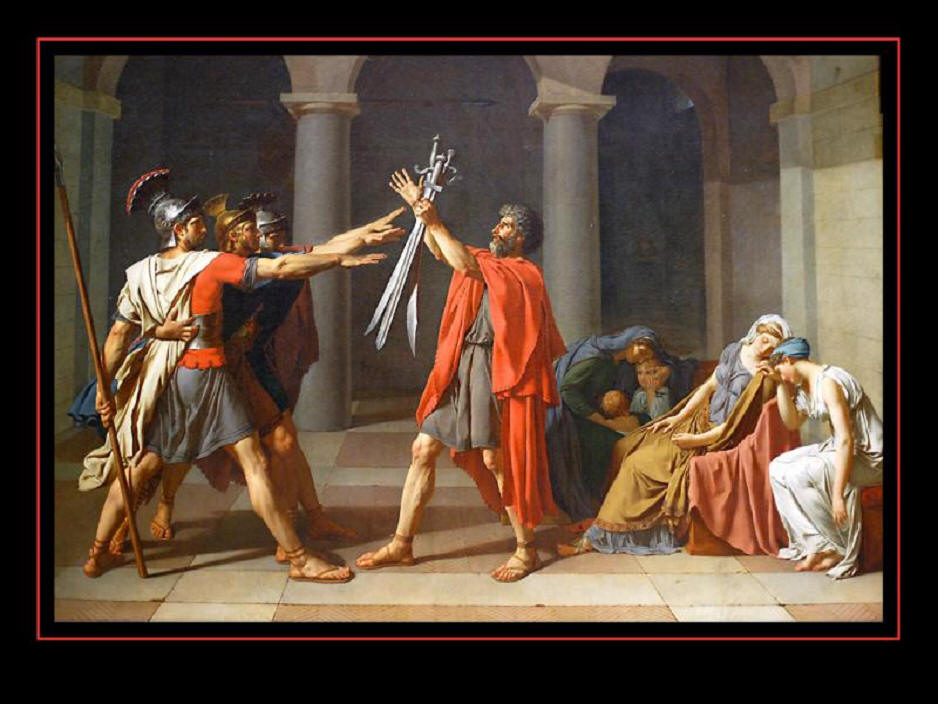 |
013. The Oath of the Horatii, Jacques-Louis
David, 1784
This painting occupies an extremely important place in the
body of David's work and in the history of French painting.
It was commissioned by the Administrator of Royal Residences
in 1784 and exhibited at the 1785 Salon under the title The
Oath of the Horatii, between their Father's Hands.
The story
was taken from Titus-Livy. We are in the period of the wars
between Rome and Alba, in 669 B.C. It has been decided that
the dispute between the two cities must be settled by an
unusual form of combat to be fought by two groups of three
champions each. The two groups are the three Horatii
brothers and the three Curiatii brothers. The drama lay in
the fact that one of the sisters of the Curiatii, Sabina, is
married to one of the Horatii, while one of the sisters of
the Horatii, Camilla, is betrothed to one of the Curiatii.
Despite the ties between the two families, the Horatii's
father exhorts his sons to fight the Curiatii and they obey,
despite the lamentations of the women.
|
|
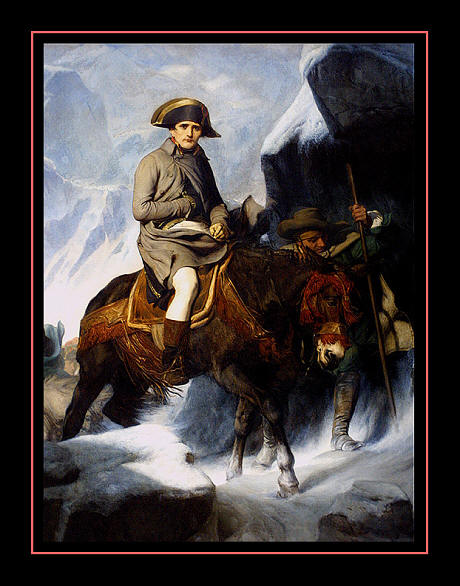 |
014. Napoleon Crossing the Alps by
Paul Delaroche (1848).
(Title
contributed by Jan Davis)
Title confirmed at
Louvre Museum web site.
|
|
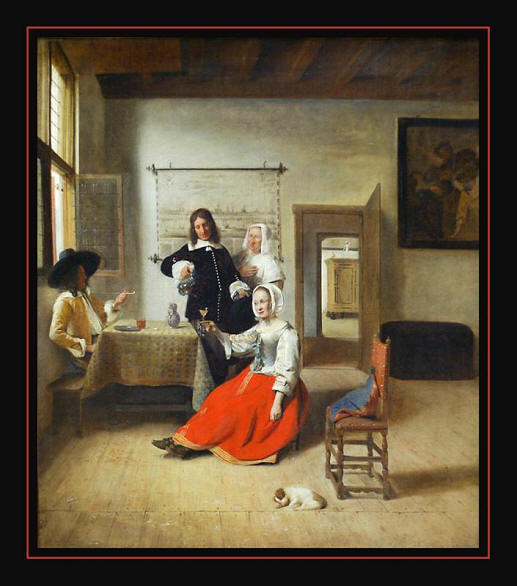 |
015. Woman Drinking with
Soldiers, 1658, by Dutch Painter Pieter de Hooch. Oil on
Canvas. (title contributed by Christina Spurgin)
|
|
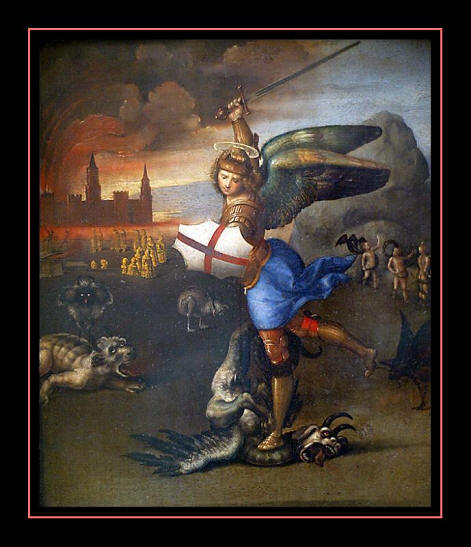 |
016.
St Michael and the Dragon,
1505, by Raphael (Florence, 1483-1520)
For centuries Raphael has been considered the supreme High
Renaissance painter, more versatile than Michelangelo and
more prolific than their older contemporary Leonardo.
His work is admired for its clarity of form and ease of
composition and for its visual achievement of the
Neoplatonic ideal of human grandeur. (Title and
comments contributed by Olga Milner)
|
|
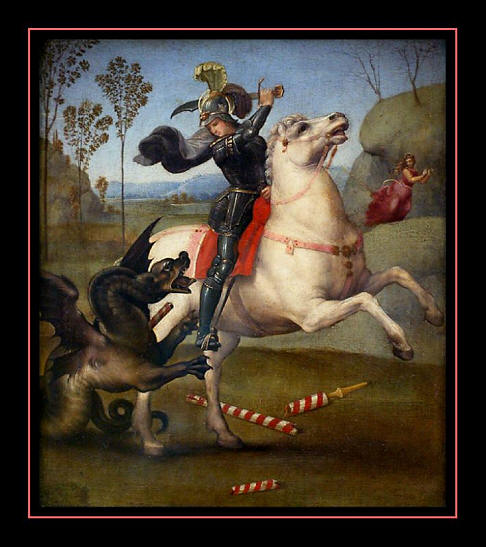 |
017. Saint George Fighting the Dragon, Rafael, 1505
|
|
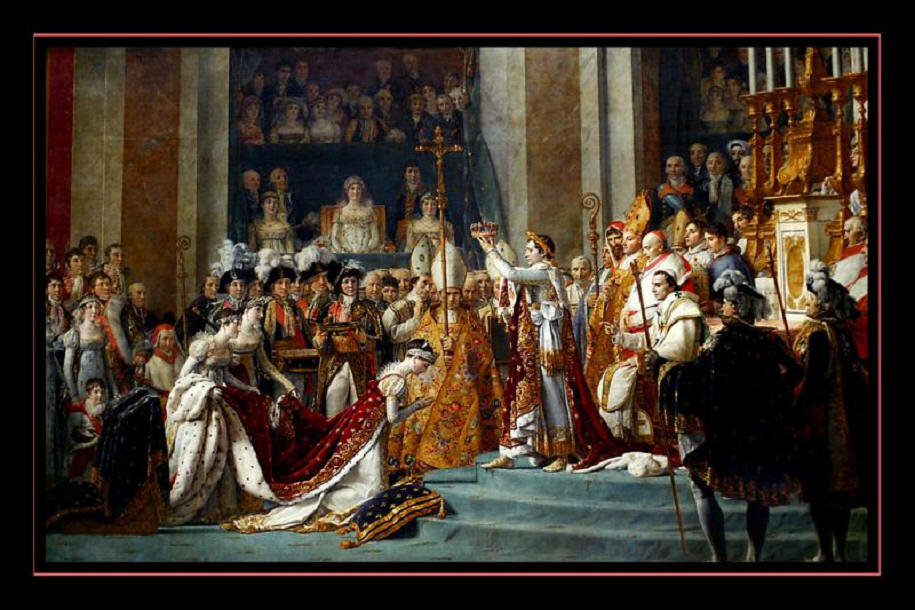 |
018. Napoleon's Coronation
by David, 1808
In 1806, Napoleon threw himself a spectacular coronation
ceremony at Notre-Dame Cathedral. He then hired the artist
Jacques-Louis David to commemorate it all on a canvas
measuring over 500 square feet.
Both outsized acts suggest that Napoleon was an early
19th-century leader with an almost 20th-century
understanding of the cult of political personality and the
sophisticated craft of shaping public image. ďNapoleonís
Coronation by DavidĒ at the Louvre (until January 17) is an
opportunity to learn more about this period in history by
revisiting one of the museumís most popular paintings.
Davidís enormous ode to power is a sublime piece of
political propaganda, as meticulously crafted as the
ceremony it depicts. But even though it is one of Davidís
most well-known works, it is far from his best. Earlier
classically-inspired hymns to Revolutionary ideals (Oath of
the Horatii, Brutus) are what made the artistís reputation
in the 1780s.
|
Next Page:
Louvre IV
|
|